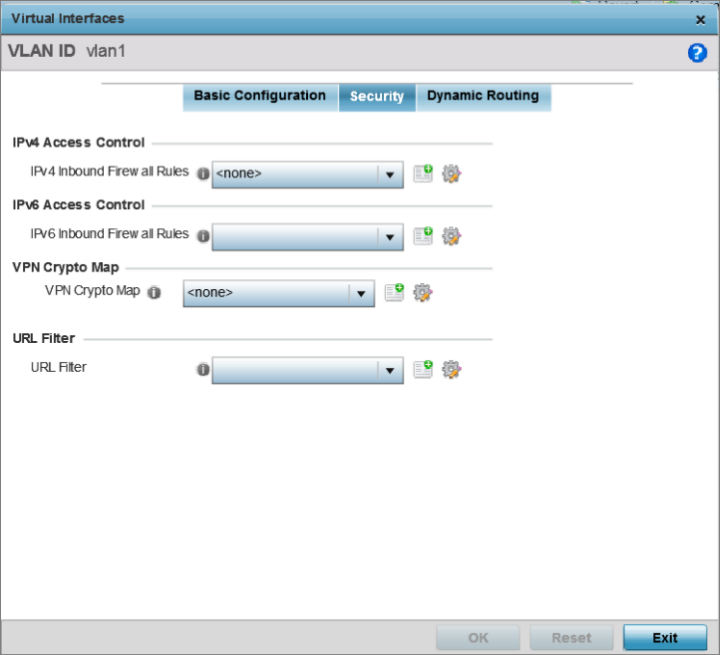Use this screen to configure firewalls. The firewall inspects packet traffic to and from connected clients. If there is no firewall rule that meets the data protection needs of this virtual interface, select the Create icon to define a new firewall rule configuration or the Edit icon to modify or override an existing configuration. For more information, see Wireless Firewall.
To set the VLAN security configuration:

Click the Create icon to define a new IPv4 firewall rule configuration, or click the Edit icon to modify an existing configuration.
IPv4 is a connectionless protocol for packet switched networking. IPv4 operates as a best effort delivery method, since it does not guarantee delivery, and does not ensure proper sequencing or duplicate delivery (unlike (TCP). For more information on creating IPv4 firewall rules, see Configuring IP Firewall Rules.
IPv4 and IPv6 are different enough to warrant separate protocols. IPv6 devices can alternatively use stateless address autoconfiguration. IPv4 hosts can use link local addressing to provide local connectivity.
Click the Create icon to define a new IPv6 firewall rule configuration, or click the Edit icon to modify an existing configuration.
IPv6 is the latest revision of the IP (Internet Protocol) replacing IPv4. IPV6 provides enhanced identification and location information for systems routing traffic across the Internet. IPv6 addresses are composed of eight groups of four hexadecimal digits separated by colons. For more information on creating IPv6 firewall rules, see Configuring IP Firewall Rules.
The VPN Crypto Map entry defines the type of VPN connection and its parameters. For more information see Defining Profile VPN Settings.
Click Reset to revert to the last saved configuration.